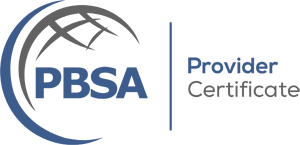Eliminating Bias in Employment Screening
Addressing Bias in Background Screening
7/2/2024
Background screening stands as a pivotal element in the hiring journey, ensuring that prospective employees align with the requirements of their roles. However, this process carries inherent risks, particularly concerning bias and discrimination. Safeguarding against these risks not only upholds ethical hiring standards but also meets legal obligations outlined by the Equal Employment Opportunity Commission (EEOC).
Recognizing Bias in Background Screening
Bias within background screening can subtly influence decision-making processes in multiple ways. Unconscious biases, shaped by preconceived notions based on factors like race, gender, criminal history, and other personal characteristics, can inadvertently perpetuate discriminatory hiring practices. Such biases deprive organizations of diverse talents and perspectives crucial for fostering innovation and growth.
Adhering to EEOC Guidelines
The EEOC provides essential guidelines to assist employers in conducting background checks that respect candidates' rights and promote equal opportunity. Central to these guidelines is the mandate to utilize background information in a manner that avoids discrimination based on race, color, national origin, sex, or religion. To mitigate bias effectively, employers should adopt proactive strategies:
- Consistent Application of Criteria: Ensure uniform application of background check criteria across all candidates within the same job category to prevent discriminatory practices.
- Consideration of Offense Relevance: Evaluate the nature, timing, and relevance of criminal records concerning job responsibilities. This approach ensures decisions are based on pertinent and current information.
- Individualized Assessments: Offer candidates the opportunity for an individualized assessment when potentially disqualifying information arises. This step allows candidates to provide context, ensuring fair decision-making beyond background check findings alone.
- Best Practices for Reducing Unconscious Bias
- Implementing best practices can further diminish unconscious bias during background screenings:
- Utilize blind screening techniques during initial application reviews to minimize biases related to names, gender, race, or ethnicity.
- Establish a structured evaluation criteria framework to ensure decisions are grounded in objective, job-relevant data rather than subjective impressions.
- Provide training on diversity, inclusion, and unconscious bias to hiring professionals to enhance awareness and promote fairer decision-making.
- Leverage technology and advanced screening software to standardize processes and reduce the potential for human bias.
Continuous Improvement and Transparency
Regularly review and update background screening criteria to ensure they remain pertinent and non-discriminatory, incorporating the latest legal guidelines and industry best practices. Transparency with candidates about the screening process and criteria builds trust and ensures fairness. Candidates should be informed of their rights to review and dispute inaccuracies in their background reports.
Choosing a Reliable Partner
Collaborate with reputable background screening providers that adhere to EEOC guidelines and local laws, offering expert guidance on fair and unbiased screening practices. Western Verify ensures equitable hiring practices by strictly adhering to EEOC guidelines, thereby eliminating bias in the hiring process.
Promoting Fairness and Inclusion
Mitigating bias in background screening is vital for cultivating workplaces that champion diversity, inclusion, and fairness. By adhering to EEOC guidelines and implementing rigorous best practices to minimize unconscious bias, employers can establish an equitable and legally compliant screening process. Ultimately, this approach fosters environments where all individuals have the opportunity to thrive based on merit, contributing to dynamic and diverse workplaces.

Blaine is the Co-Founder and COO of Western Verify, and spends his free time hosting parties or traveling with his amazing family.


